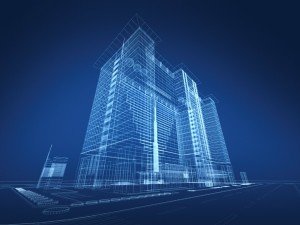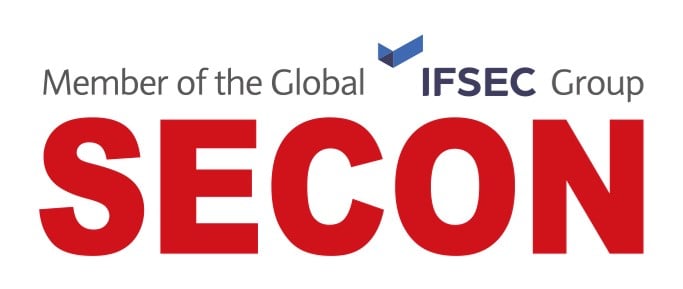Introduction to Intelligent Buildings
The Chartered Institution of Building Services Engineers (CIBSE) defines an intelligent building as “one that provides a productive and cost-effective environment based on three basic elements:people, products, and processes”.
 In this context, the people are the building services users and facilities managers. The products are those employed in the building fabric and structure and as part of its facilities.
In this context, the people are the building services users and facilities managers. The products are those employed in the building fabric and structure and as part of its facilities.
Download a short presentation about Intelligent Buildings by entering your details in the form to the right
When it comes to processes, we’re really talking about automation, control, systems, maintenance, and performance.
Inevitably, there will be interrelationships among these three elements. The CIBSE definition continues:
Intelligent Buildings help building owners, property managers and occupants realise their goals in the areas of costs, lifetime energy management, well-being, convenience, safety, long term flexibility and marketability to achieve buildings which have high social, environmental and economic values.
Benefits of an Intelligent Building
1. Energy Savings. Many buildings constructed in the past two decades have been designed with sustainability and low energy use in mind.
2. Reducing cost of changing occupancy and configuration
3. Improving end user / employee productivity in the workplace
4. Maintaining a comfortable, safe and secure environment at all times for those who work within
Unmanageable complexity
However, conclusions drawn from post-occupancy evaluation specialists occasionally have been questioning in nature. These conclusions are perhaps best summed up by the sentence: “Unmanageable complexity is the enemy of good performance.”
From an engineering perspective, there have been instances of overly complicated designs that are difficult to apply in a real-world setting. Technology-centric risk has sometimes been introduced, mainly due to product interfaces lacking cohesion and compatibility.
In certain scenarios, we’ve witnessed the emergence of a dependency culture when it comes to maintenance and/or aftercare. Here, the building owner is reliant on often expensive engineering callouts to modify the settings of specific digital systems they’re not able to maintain themselves and for which they don’t possess the access rights (and, sometimes, the software).
Convergence issues caused by intelligent buildings
Converged infrastructures bringing together building and business systems have gained in popularity of late, but there are risks involved. Individuals may look to bypass security controls, for example, or otherwise operate systems incorrectly for some kind of short-term advantage. Also, IT and facilities management teams brought together by a determined integration move may have different priorities, cultures, and/or chains of command. Ultimately, such factors may serve to inhibit an effective response to security-related incidents.
However, converged infrastructures typically realise more efficient and effective working environments. They purposefully allow for access control and other security-focused solutions to mirror change in use patterns within a given building. This is a time-efficient, practical step forward.
One $64,000 question that today’s professional needs to answer in relation to security and risk management is “What problems are we trying to solve?” Once that question has been answered, the security/risk mitigation solutions put in place absolutely have to be the most appropriate for the tasks at hand, the most robust, and, importantly, the most reliable ones available.
Today’s security solution designers have to understand more about what end users actually like and dislike when it comes to, on the macro level, buildings as a whole and, on the micro level, the security solutions provided and how they fit within everything else that duly forms the structural backbone for the host organisation.
Intelligent, simpler buildings
From a security perspective, the major issues at play are protecting the security and privacy of a building’s owners and users, maintaining the integrity of that building (and what happens inside it), and ensuring the building’s continuing availability for those owners and users.
Although making matters far simpler may not be at the top of every security solutions provider’s list of initial goals, every provider must remember at all times that intelligent buildings are intended to render operations smoother and easier for their occupants — the end users. Building intelligence into the equation should beget sensible systems that are also of themselves intelligible.
Security solutions within and about buildings must not be a challenge. Neither must they alienate the end user, nor lock security professionals into what can be time-consuming and costly dependencies on maintenance regimes. Perhaps most importantly of all, it’s vital to provide security professionals — and building occupants per se — with solutions they actually want and need, as opposed to those that others believe they ought to have.
An Introduction to Intelligent Buildings
Introduction to Intelligent Buildings The Chartered Institution of Building Services Engineers (CIBSE) defines an intelligent building as “one that provides […]
Brian Sims
IFSEC Insider | Security and Fire News and Resources

 In this context, the people are the building services users and facilities managers. The products are those employed in the building fabric and structure and as part of its facilities.
In this context, the people are the building services users and facilities managers. The products are those employed in the building fabric and structure and as part of its facilities.



